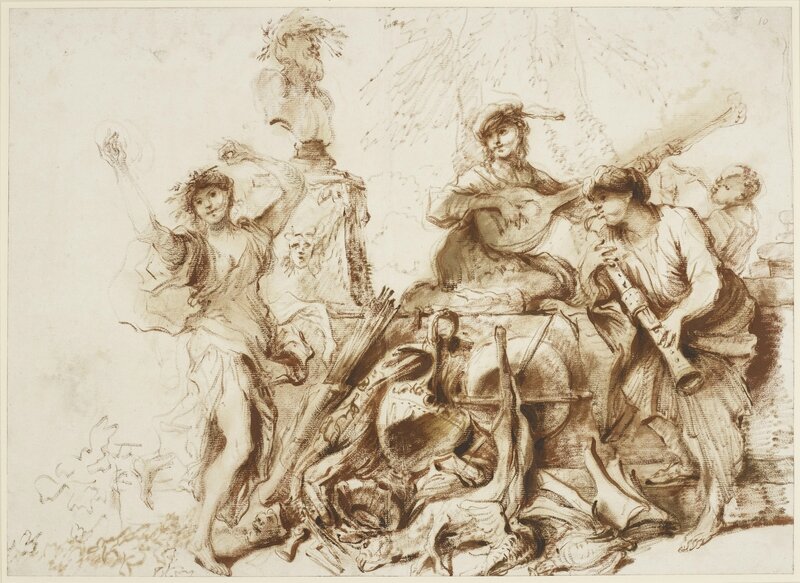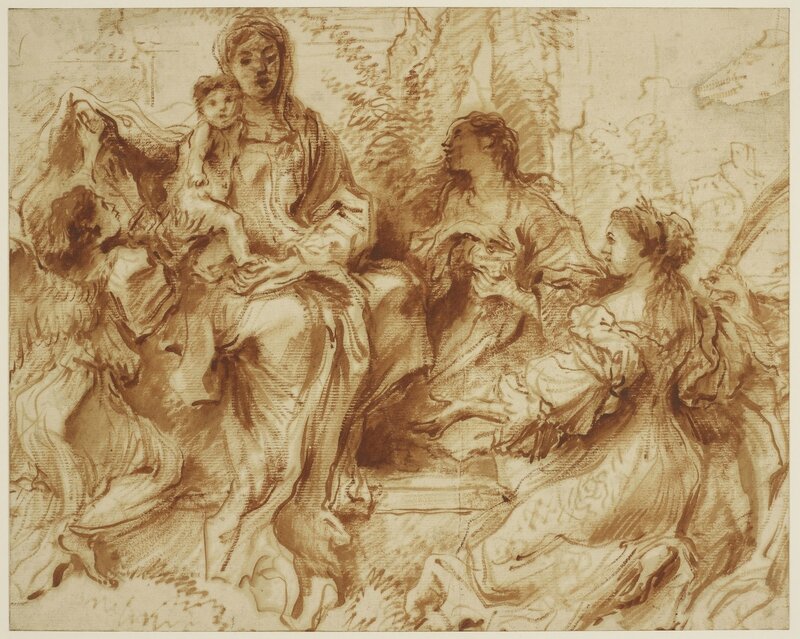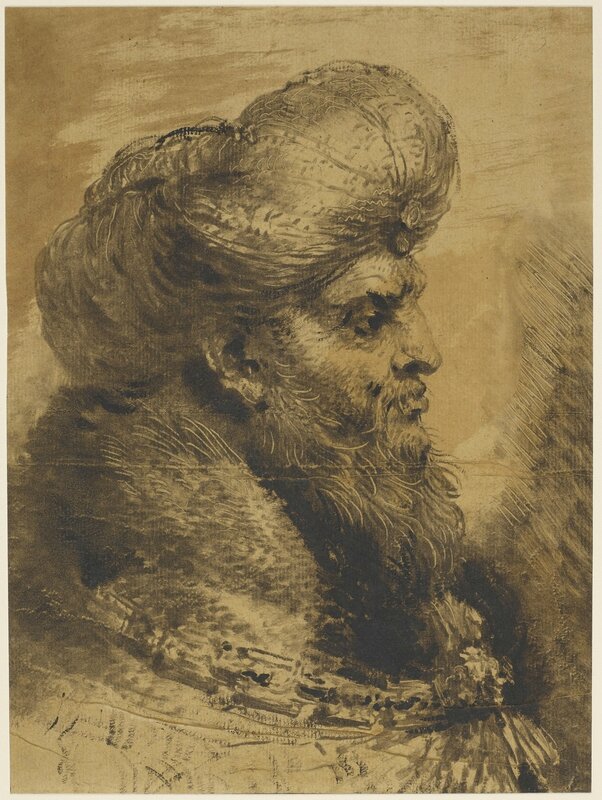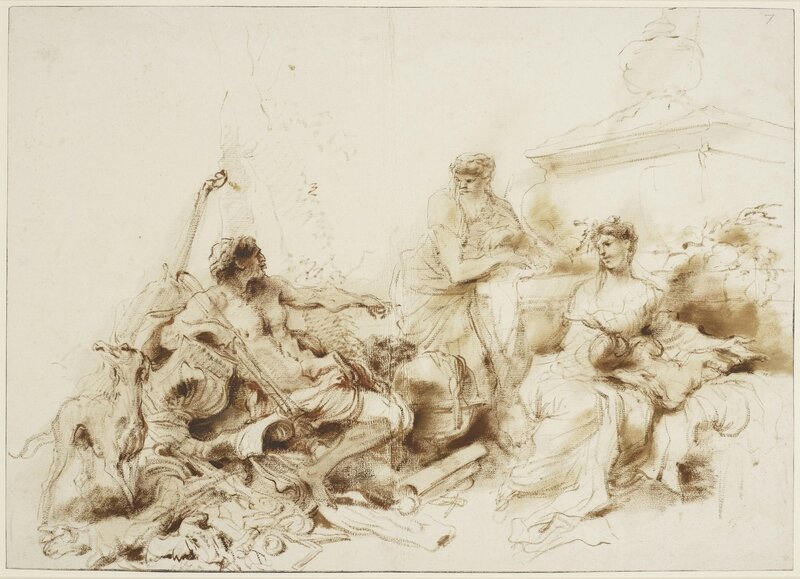Pachnoda werneri, Poecilopharis curtisi, Plaesiorrhinella watkinsiana, Paradorysthetus coerulescens
Offert par le roi Edouard VII à Lady Randolph Churchill en 1907, Exceptionnel drageoir en argent repoussé et ciselé ( 925°/°°)
Offert par le roi Edouard VII à Lady Randolph Churchill en 1907, Exceptionnel drageoir en argent repoussé et ciselé ( 925°/°°). Estimation : 5 000 € / 7 000 €. Photo Limoges Enchères.
Orfèvre: Berthold MUELLER, Hanau. Poinçon: Chester 1906. Poinçon d'importation: feuilles de chêne et gland, Chester 1904. Poinçons de Hanau début XXème. Poids: 608 g. Haut: 19,5 cm. Long: 16 cm. Micro fêlures.
LIMOGES ENCHÈRES, Vente de Prestige : Tableaux, Art du Feu, Mobilier, le 21 Novembre 2015 à 14h
White gold drop earrings with diamonds and natural pearls.
White gold drop earrings with diamonds and natural pearls. Estimate : 80 000 € / 160 000 €. Photo Il Ponte Casa d'Aste
10,06x10,11 mm h 16,50 mm; the other 10,42x10,83 mm h 16,15 mm.
Appended CISGEM gemmological report n. 80566, Milano 4 september 2013
IL PONTE CASA D'ASTE, 20121 MILAN. Joaillerie, le 24 Novembre 2015 à 10h30 et 15h30
Natural, fancy light yellow rectangular diamond
Natural, 7.01 cts fancy light yellow rectangular diamond, clarity:IF. Estimate : 60 000 € / 90 000 €. Photo Il Ponte Casa d'Aste
With appended GIA colored diamond report n. 1172192558 of 25/06/2015
IL PONTE CASA D'ASTE, 20121 MILAN. Joaillerie, le 24 Novembre 2015 à 10h30 et 15h30
Bulgari. Gold bracelet with white cultured pearls and oval coloured gemstones including quartz, tourmalines, and garnets
Bulgari. Gold bracelet with white cultured pearls and oval coloured gemstones including quartz, tourmalines, and garnets. Estimate : 9 000 € / 12 000 €. Photo Il Ponte Casa d'Aste
115g - 19,50 x 2 cm. Original case.
IL PONTE CASA D'ASTE, 20121 MILAN. Joaillerie, le 24 Novembre 2015 à 10h30 et 15h30
Sapphire, Diamond, Platinum Necklace, Bvlgari
Sapphire, Diamond, Platinum Necklace, Bvlgari. Estimate: $60,000 - $80,000. © 2015 Heritage Auctions.
The necklace features oval-shaped sapphires ranging in size from 7.45 x 6.65 x 4.00 mm to 10.95 x 10.20 x 6.50 mm and weighing a total of approximately 79.50 carats, enhanced by square-cut diamonds weighing a total of approximately 2.00 carats, set in platinum, marked Bvlgari. Gross weight 69.60 grams. Length: 16 inches
Heritage Auctions' Dec. 7, 2015 Jewelry Signature® Auction.
Resin, Gold Earrings, JAR
Resin, Gold Earrings, JAR, French. Estimate: $10,000 - $12,000. © 2015 Heritage Auctions.
The resin and 18k gold Tickle Me Feather earrings weigh 17.30 grams, marked JAR. Dimensions: 2-3/8 inches x 1-1/2 inches
*Note: earrings are designed for non-pierced ears
Heritage Auctions' Dec. 7, 2015 Jewelry Signature® Auction.
JAR. "Tickle Me Feather" earrings from the MET show Jewels by JAR.
Pair of Silver, Gold, Topaz and Diamond 'Feather' Earclips, JAR
Pair of Silver, Gold, Topaz and Diamond 'Feather' Earclips, JAR. Estimate 250,000 — 350,000 USD. Photo: Sotheby's.
The stylized feathers centering two pear-shaped topazes weighing 20.99 carats, framed by swirled plumage set with round diamonds weighing 10.75 carats, signed JAR Paris; 1987. With signed box.
Sotheby's. Magnificent Jewels, New York, 09 Dec 2015, 10:00 AM
Dilobopterus sp., Dilobopterus dispar
Cicadellidae sp
Arboridia plena
Hamiltons exhibits for the first time whole "Flowers" series of pictures by Irvin Penn
Irving Penn, Iceland Poppy (B), New York, 2006, 18 5/8 x 21 in. (47.3 x 53.3 cm.). Edition of 9 © The Irving Penn Foundation
LONDON.- Hamiltons presents Irving Penn: Flowers, marking the third occasion on which gallery owner Tim Jefferies is presenting an entire series of photographs printed by the legendary photographer as an edition. As with Hamiltons’ previous Penn exhibitions, Cigarettes (2012) and Cranium Architecture (2013), this exhibition of Flowers is the first time this whole series of pictures has been shown together.
As the exclusive UK representative for Mr. Penn’s pictures for over a quarter-century, Hamiltons has the unique privilege of being able to represent the complete Flowers series of 42 print editions, accompanied by a fully illustrated, hardbound catalogue raisonné, published by Hamiltons Gallery in collaboration with The Irving Penn Foundation.
Irving Penn, Three Poppies 'Arab Chief', New York, 1969, 21 5/8 x 18 1/8 in. (54.9 x 46 cm.). Edition of 27 © Condé Nast Publications, Inc.
Irving Penn was born on June 16, 1917 in Plainfield, New Jersey. He studied at the Philadelphia Museum School of Industrial Art, under the tutelage of Alexey Brodovitch, who would later become famous for his work at Harper’s Bazaar, and one of the most influential editors of his era. In the late 1930’s Penn worked as Art Director of the department store Saks Fifth Avenue, then spent a year painting in Mexico, before joining the staff of Vogue in 1943 where, on the suggestion of its Art Director, Alexander Liberman, he started working as a photographer. This proved a turning point in his career, with Penn photographing his first cover for Vogue magazine in 1943. He continued to work at the magazine throughout his life, photographing covers, portraits, still lifes, fashion, and photographic essays.
Irving Penn, Poppy 'Barr's White', New York, 1968, 19 1/2 x 17 1/2 in. (49.5 x 44.5 cm.). Edition of 13 © The Irving Penn Foundation
Penn’s Flowers series was initiated from an assignment by American Vogue for the 1967 Christmas edition. This became the first of seven annual assignments that Penn would photograph flowers for Vogue, each year devoting himself to one class of flower. The photographs were collectively published as a book Flowers in 1980: 1967, Tulips; 1968, Poppies; 1968, Peonies; 1969, Orchids; 1970, Roses; 1971, Lilies; 1973, Begonias (Penn also photographed wildflowers in 1973 which appeared in Vogue’s 1974 Christmas edition but were excluded from the Flowers book). Thereafter, Penn returned to the subject right up until his death in 2009.
Irving Penn, Anemone 'Inra Blue', New York, 2006. © Conde Nast Publications, Inc.
Penn’s approach to the still life evolved over decades; from the 1930s onwards, he arranged everyday objects to create assemblages, which transcended their origins and original purpose to become conceptual works of art. His apparently simplistic compositions are void of sentimentality and focus on the detail, form and wonder of each specimen. In his Flowers series, Penn presents us with an exceptional vision of forms, tones and patterns, entwining the beauty of nature with his photographic genius. Photographing each flower slightly differently and with meticulous attention to detail, each of Penn’s flower portraits are captured in his signature minimal and elegant style, against a plain background (Penn was one of the first fashion photographers to photograph his subjects against a plain backdrop). Penn’s aesthetic approach to his botanic work is similar to that of his fashion photography; the flower portraits are intensely beautiful and likewise surprising, rife with unusual angles and unexpected focal points, providing the viewer a rare vision of the patterns, colours and forms of the flowers.
Irving Penn, Peony/Paenoia: Silver Dawn, New York, 2006. Digital pigment print with Epson Ultrachrome. Paper mounted to board, 23 7/8 x 20 3/4 in. Edition of 14 © The Irving Penn Foundation
“I can claim no special knowledge of horticulture… I even confess to enjoying that ignorance since it has left me free to react with simple pleasure just to form and colour, without being diverted by considerations of rarity or tied to the convention that a flower must be photographed at its moment of unblemished, nubile perfection." Irving Penn
In contrast to his fashion work, Penn had an interest in the temporal nature of life and would often record the impending prospect of death. This subject is evident in Cranium Architecture, Archaeology, and also in Flowers. As Penn documents the beauty and patterns within the flowers, and draws attention to the reproductive elements within, he is also viewing them as they slowly break down and wilt. Often Penn deliberately chose flowers that "have passed the point of perfection, when they have already begun spotting and browning and twisting on their way back to the earth." Thus, Penn chose to focus on moments of unlikely beauty, revealing the mortality of flowers, whilst also celebrating the sensual beauty of each specimen.
Irving Penn, Iceland Poppy/Papaver nudicaule (F), New York, 2006. Digital pigment print with Epson Ultrachrome. Paper mounted to board, 26 3/8 x 21 1/2 in. Edition of 14 © The Irving Penn Foundation
Widely recognised as one of the world’s most important photographers, in the 1950s Penn founded his own studio in New York and continued to develop his fashion, commercial and personal work for the rest of his life, exhibiting internationally throughout the later decades of his career and publishing over 25 books including Moments Preserved (1960); Worlds in a Small Room (1974); Passage (1991); and A Notebook at Random (2004).
Penn died in 2009; his work is still widely exhibited around the world, and is held in major permanent collections including the Metropolitan Museum of Art, New York; Museum of Modern Art, New York; J. Paul Getty Museum, Los Angeles; Art Institute of Chicago; J. P. Morgan Library, New York; National Gallery of Art, Washington, D.C.; National Portrait Gallery, London; the Moderna Museet, Stockholm; and Smithsonian American Art Museum, Washington, D.C., amongst others. In 2013 The Irving Penn Foundation donated 100 photographs to the Smithsonian American Art Museum, bringing the number of works in their collection to 161.
Irving Penn, Iceland Poppy/Papaver nudicaule (H), New York, 2006. Digital pigment print with Epson Ultrachrome. Paper mounted to board, 30 1/2 x 23 7/8 in. Edition of 10 © The Irving Penn Foundation
Mr. Penn’s major museum retrospective, Irving Penn: Beyond Beauty, opened recently at the Smithsonian American Art Museum, 23rd October 2015 – 20th March 2016. The Metropolitan Museum of Art has announced it will present a major retrospective exhibition of Penn’s photographs, opening in April 2017, to mark the centennial of the artist’s birth. The Irving Penn Foundation will make a monumental gift to the museum of more than 150 photographs, representing every period of Penn’s dynamic 70 year career, which will be central to the exhibition.
Installation view.
"Castiglione: Lost Genius, Masterworks on Paper from the Royal Collection" opens in Fort Worth
Giovanni Benedetto Castiglione, A presumed self-portrait, 1640s. Etching, platemark; overall: 188 x 138 mm. Royal Collection Trust / © Her Majesty Queen Elizabeth II 2015.
FORT WORTH, TX.- He was one of the most innovative artists of the Italian Baroque. Yet Giovanni Benedetto Castiglione (1609–1664) was also a violent and impetuous man, who was repeatedly in court for assault, allegedly attempted to throw his sister off a roof, destroyed his own work in front of powerful patrons, and was forced to flee Rome in mysterious circumstances. The turbulence that characterised his life overshadowed his artistic brilliance, and Castiglione struggled to achieve the recognition that he deserved. Much of what is known about the artist is derived not from fulfilled commissions, but from court documents.
The Royal Collection contains the largest and finest group of the artist’s work, and this winter The Kimbell Art Museum will stage the exhibition dedicated to Castiglione. Through 98 drawings and prints the exhibition aims to reinstate Castiglione in his rightful place as one of the greatest artists of the Baroque.
Giovanni Benedetto Castiglione, The Genius of Castiglione, dated 1648. Etching, platemark; overall: 372 x 250 mm. Royal Collection Trust / © Her Majesty Queen Elizabeth II 2015.
Castiglione’s body of work is unique in the 17th century. His best-known works are his large drawings in oil directly on paper: these dynamic compositions, exceptional for their time, were conceived as finished works of art, despite their spontaneous and sometimes even rough appearance. Castiglione was also one of Italy’s most significant printmakers, producing around 60 etchings and inventing the technique of monotype – creating an image in oils or printer’s ink on a metal plate and then taking a single impression on a sheet of paper. This strikingly modern hybrid of drawing, painting and printmaking was not to be exploited again until it was reinvented by the likes of Degas and Gauguin over 200 years later.
Castiglione trained in the cosmopolitan port of Genoa in north-west Italy. His early reputation was based on his skill in depicting pastoral subjects, lyrical scenes of shepherds and animals in fertile landscapes. A study of camels and goats from c.1630, probably his earliest surviving work, would have been drawn from stock motifs – camels were not to be found in even as cosmopolitan a city as Genoa. As his ambitions grew, Castiglione moved to Rome and began to tackle grander themes of religion, mythology, legend and allegory that belied the darker undercurrents of his personality.
Giovanni Benedetto Castiglione, Omnia Vanitas, c. 1650-55. Dark reddish-brown oil paint on paper,39.2 x 4.4 cm (sheet of paper). Royal Collection Trust / © Her Majesty Queen Elizabeth II 2015.
Back in his home city in the 1640s, Castiglione was on the verge of becoming Genoa’s leading painter, but he threw it away in an instant. On hearing that the Doge of the Republic, Giovanni Battista Lomellini, had been advised to turn down a painting commissioned from him, Castiglione drew his sword and slashed the work to shreds in front of the Doge's court, swearing that the Lomellini would never again have a work from his hand. Having insulted Genoa's most powerful family he then had to flee the city in disguise. Castiglione settled back in Rome, but four years later he had to flee again, in such haste that he left all his possessions behind. Nothing further is known about this episode, but he must have feared that his life or his liberty was in immediate danger.
Castiglione’s nomadic life led him to Rome, Florence, Naples, Venice and finally Mantua, bringing him into contact with artists from all over Europe, most notably Anthony van Dyck in Genoa and Nicolas Poussin in Rome. Magpie-like, he absorbed a variety of stylistic influences and often borrowed motifs or even entire compositions. In a coloured oil drawing from the 1630s, he translated the Renaissance subtlety of Titian’s Sacred and Profane Love (1514) into a theatrical Baroque style. Castiglione is the first artist in Italy known to have borrowed directly from Rembrandt – a sheet of Studies of heads copies figures from Rembrandt’s etching Ecce Homo of 1636 – and Castiglione's own etchings were heavily influenced by the natural expressiveness of the Dutch artist’s work.
Giovanni Benedetto Castiglione, The Virgin and Child with Saints Catherine and Mary Magdalene, c. 1655-60. Red-brown oil paint on paper, 35.8 x 44.7 cm (sheet of paper). Royal Collection Trust / © Her Majesty Queen Elizabeth II 2015.
Castiglione’s powerful Head of an oriental from the late 1640s is among the finest of his monotype prints. Having drawn the image on the plate with sticky ink, the artist scraped into the surface to highlight details of the sitter’s turban, beard and fur collar. Reversing the process, Castiglione would sometimes cover the plate entirely with ink and then scrape the design into it, producing the dramatic contrasts of light and dark seen in The Nativity with angels (c.1655).
Castiglione’s greatest and most distinctive works are his large oil drawings, often executed in warm reddish-brown tones. He used the medium in a variety of ways, from a thin transparent wash that soaks into the paper, to a thick, opaque, almost dry pigment to pick out details. His finest drawings, among them Circe with the companions of Odysseus transformed into animals and the allegory of transience, Omnia vanitas, are among the most original and exciting works on paper of the entire Baroque.
Giovanni Benedetto Castiglione, The head of an oriental, c.1645-50. Monotype with black oil paint and brown wash on brown-toned paper, 31.7 x 23.6 cm (sheet of paper) . Royal Collection Trust / © Her Majesty Queen Elizabeth II 2015.
Towards the end of his life, Castiglione achieved some sort of stability as a court artist to the Gonzaga dukes of Mantua. He died in that city in 1664, but his brother Salvatore and eldest son Giovanni Francesco maintained the family studio and perpetuated Giovanni Benedetto's style for the rest of the century. Giovanni Francesco was in turn appointed court artist to Duke Ferdinando Carlo in 1681. Hundreds of drawings from the Castiglione studio seem to have entered the Gonzaga collection, and when the Gonzaga fell from power in 1708 and went into exile in Venice, those drawings probably went with them.
The presence of so many of Castiglione's drawings in Venice led to a revival of interest in his works, and during the 1700s he gained a reputation that he had struggled to achieve in his lifetime. Castiglione's innovative style and technique captured the imagination of such major figures as Giovanni Battista Tiepolo (1696–1770), whose etching of a Group of figures discovering a skeleton reading (c.1740) is essentially a homage to the work of his Genoese predecessor. Castiglione’s posthumous celebrity was short-lived, however, and during the 19th century he fell from fame, his highly original and improvised techniques at odds with the restrained classical taste of the time.
Giovanni Benedetto Castiglione, An Allegory in Honour of the Duchess of Mantua, c. 1650-55. Dark reddish-brown and dark red oil paint on paper, 39.2 x 54.9 cm (sheet of paper). Royal Collection Trust / © Her Majesty Queen Elizabeth II 2015.
HOMMAGE AU PROFESSEUR TRẦN VĂN KHÊÀ LA MAISON DES CULTURES DU MONDE
PARIS - La Maison des Cultures du Monde rendra hommage au Professeur Trần Văn Khê le 26 novembre 2015 à 19h.
«Rendre hommage à la mémoire du Professeur Tran Van Khê est un devoir que la Maison des cultures du monde se doit d’accomplir. Elle le fait par admiration et respect pour cet éminent musicologue qui lui a fait l’honneur de son attention et de sa collaboration. Elle le fait aussi par amitié, celle qui lie les passionnés de découverte et de connaissance des cultures du monde.
Lui rendre hommage c’est aussi rendre hommage à l’ouverture, à la générosité du musicologue toujours soucieux de « donner », de faire connaître, jamais avare de son savoir.
Ses amis, ses collègues, ses disciples présenteront films et documents sonores et témoigneront de l’œuvre du grand érudit disparu.»
Chérif Khaznadar
Programme :
« Le professeur Tran Van Khê et la Maison des Cultures du Monde, des années de complicité »
par Chérif Khaznadar, président de la Maison des Cultures du Monde.
« Quelques repères dans la vie de mon père »
par Tran Quang Hai, ethnomusicologue (CNRS), musicien.
« Un homme à l’écoute des Autres »
par Simha Arom, ethnomusicologue, directeur de recherches émérite au CNRS.
« Portrait du professeur Tran en mandarin merveilleux
par François Picard, ethnomusicologue, professeur des universités et Yvonne Duong, doctorante en ethnomusicologie vietnamienne.
« Le professeur Tran Van Khê dans l’aventure du Centre d’Études de Musique Orientale »
par Cheng Shui Cheng, ethnomusicologue (CNRS).
« Tran Van Khê, passeur de musiques et messager de paix »
(Extraits du film de Ho Thuy Tien présentés par la réalisatrice).
Performance musicale de đờn ca tài tử par Trân Quang Hai et Bach Yen.
Hommage à un homme de lumière : le Pr. Trân Van Khê
Jeudi 26 novembre 2015 à 19h
Maison des Cultures du Monde
101 boulevard Raspail
75006 Paris
Entrée libre dans la limite des places disponibles.
A Diamond Ring
A 4.94 carats Diamond Ring. Estimate 31,500 — 37,500 USD (29,400 — 35,000 EUR). © 1996-2015 Dupuis Fine Jewellery Auctioneers
Set with a marquise-cut diamond weighing 4.94 carats, flanked on either side by a trio of marquise-cut diamonds, mounted in platinum and 10k white gold
With report 2175173710 dated 20 May 2015 from the Gemological Institute of America stating that the diamond is D colour, SI2 clarity
Dupuis Fine Jewellery Auctioneers. Fall 2015. NOVEMBER 22, 2015, WINDSOR ARMS HOTEL, 18 St. Thomas Street, Toronto
A Georgian Diamond Floral Brooch, circa 1800
A Georgian Diamond Floral Brooch, circa 1800. Hammer Price: $10,000. © 1996-2015 Dupuis Fine Jewellery Auctioneers
Designed as a flowerhead decorated throughout with old mine and rose-cut diamonds weighing approximately 12.25 carats, mounted in silver and gold.
Dupuis Fine Jewellery Auctioneers. Fall 2015. NOVEMBER 22, 2015, WINDSOR ARMS HOTEL, 18 St. Thomas Street, Toronto
An Antique Diamond Starburst Brooch-Pendant, circa 1875
An Antique Diamond Starburst Brooch-Pendant, circa 1875. Estimate 5,250 – 6,750 (4,900 – 6,300 EUR). © 1996-2015 Dupuis Fine Jewellery Auctioneers
The starburst design centering an old mine-cut diamond weighing approximately 0.80 carat, surrounded by twenty undulating rays set with old mine and rose-cut diamonds weighing approximately 6.50 carats, mounted in silver and gold
Dupuis Fine Jewellery Auctioneers. Fall 2015. NOVEMBER 22, 2015, WINDSOR ARMS HOTEL, 18 St. Thomas Street, Toronto
An Antique Sapphire and Diamond Pendant-Brooch, circa 1880
An Antique Sapphire and Diamond Pendant-Brooch, circa 1880. Estimate 12,000 — 13,500 USD (11,200 — 12,600 EUR). © 1996-2015 Dupuis Fine Jewellery Auctioneers
Designed with curling ribbons, floral motifs and a garland swag, suspending a pear-shaped sapphire weighing approximately 5.60 carats, and centering a later added oval sapphire weighing approximately 3.00 carats, set throughout with old-cut diamonds, mounted in silver and gold
Dupuis Fine Jewellery Auctioneers. Fall 2015. NOVEMBER 22, 2015, WINDSOR ARMS HOTEL, 18 St. Thomas Street, Toronto
A Fine Sapphire and Diamond Ring
A Fine 4.37 carats Kashmir Sapphire and Diamond Ring. Estimate 67,500 – 82,500 USD (63,000 – 77,000 EUR). © 1996-2015 Dupuis Fine Jewellery Auctioneers
Set with a cushion-shaped sapphire weighing 4.37 carats, flanked by a pair of trilliant-cut diamonds, mounted in platinum
With report 2165080219 dated 27 May 2014 from the Gemological Institute of America stating natural sapphire, geographic origin Kashmir, no indication of heating.
With report 12110169 dated 24 April 2014 from the Gubelin Gem Lab stating that gemmological testing revealed characteristics consistent with those of sapphires originating from Kashmir. No indications of heating. Sapphires which have not been heated are scarce.
Dupuis Fine Jewellery Auctioneers. Fall 2015. NOVEMBER 22, 2015, WINDSOR ARMS HOTEL, 18 St. Thomas Street, Toronto
Artisanat de France et d’ailleurs chez Loan de Fontbrune
pour vos cadeaux de Noël, vente privée, 20 r Hallé 75014 Paris

les vêtements de la styliste Liên Pham
autour du Vietnam avec Loan de Fontbrune
les tissus des minorités ethniques, les broderies, l’artisanat et les antiquités : argenterie, bronze, céramique, nacre, bois etc.






























































